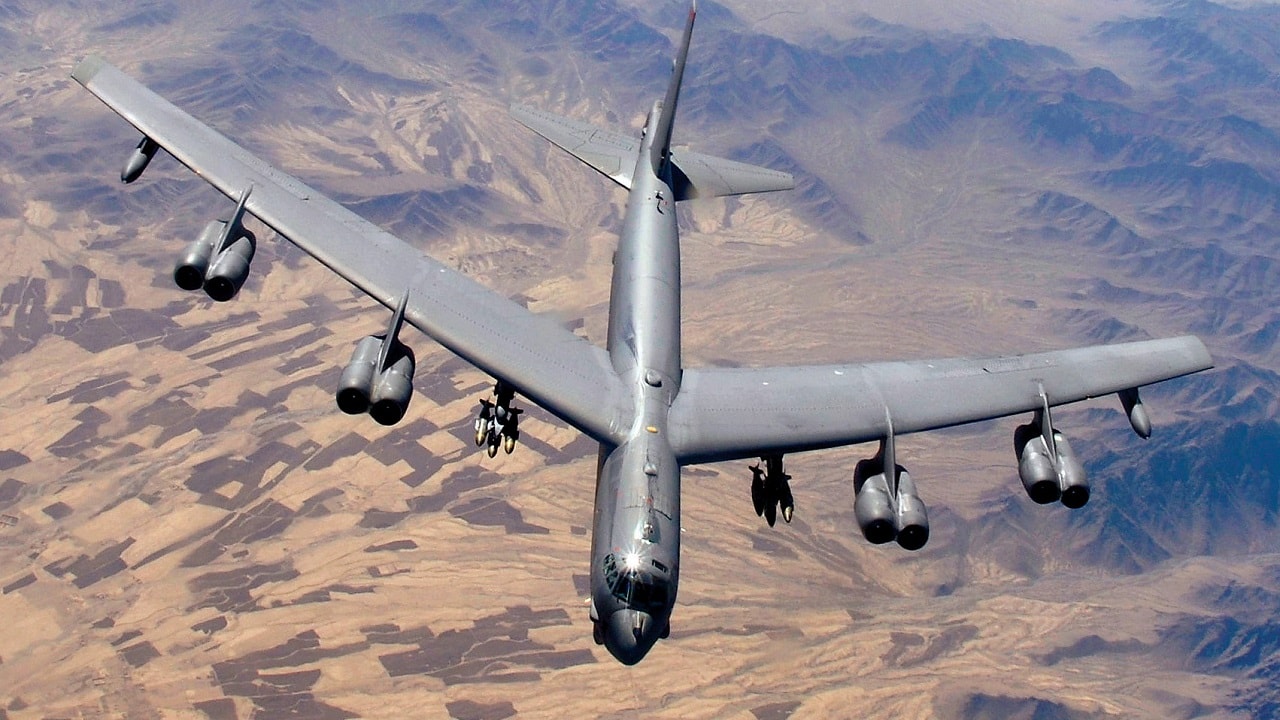The iconic B-52 is well known for carpet-bombing enemy areas of North Vietnam. The classic bomber has been upgraded so extensively that it is entirely realistic that the plane could fly for a total of 100 years.
Given this, the B-52 has been thought of as a massive “bomb truck” in the sky able to deliver large payloads including air-dropped bombs, long-range cruise missiles, and even nuclear weapons.
The B-52 is Not Stealthy
Nonetheless, the B-52 suffers from a large setback likely to imperil its chances to survive a great power war. Simply put, the aircraft is not stealth, but rather large and easily “findable” and “targetable” by enemy air defenses and faster fighter jets in position to attack. This naturally introduces the question as to whether the B-52 can somehow compensate for its lack of stealth such that it could prove useful and survive in a great power war against an advanced enemy.
The airframes from decades ago have remained viable, with some structural maintenance and support, yet today’s B-52 operates with a new digital radio system, next-generation avionics and sensors, and a recently reconfigured internal weapons bay, which allows for a much greater bomb-carrying and attack capacity.
Continued Upgrades
The new internal weapons bay effort, the Internal Weapons Bay Upgrade (IWBU), has been underway for years. The upgrade enables the aircraft to carry more Joint-Air-to-Surface Standoff Missiles (JASSM) and a weapon called the Miniature Air Launched Decoy jammer variant.
Using a digital interface and rotary launcher, the emerging IWBU massively increases the B-52’s weapons payload, enabling it to carry up to eight of the newest “J” Series bombs. This precision-bombing technology has been fundamental to the tactical and technological maturation of the B-52, which has evolved from a conventional bomb or so-called “carpet bombing” platform into one capable of precision-strikes, hypersonic attacks, long-range cruise missile attacks, and possibly even drone-launching capabilities.
Drone On
There are several variables to consider with this, perhaps the most significant being manned-unmanned teaming, the fast-growing ability for manned aircraft to network with, or even fully operate nearby unmanned systems from the cockpit. This means a B-52 could impact air combat by identifying and then transmitting key targeting specifics to air and ground platforms in a position to attack, all while the B-52 itself operates at a safe stand-off range.
On this point, the Air Force has already tested the B-52’s ability to launch mini-drone swarms to blanket an area with Intelligence, Surveillance, Reconnaissance (ISR), overwhelm or jam enemy air defenses and even deliver weapons themselves when directed by a human. The B-52 will also be armed with major stand-off weapons such as hypersonic missiles and the Long-Range Stand-Off System or LRSO, a long-range, nuclear-capable cruise missile able to find and help attack targets from great distances.
This would give the B-52 an opportunity to have a decisive impact from safer stand-off ranges, by virtue of its growing ability to gather and network time-sensitive war details without having to expose itself to as much precision enemy fire.
This kind of an ability to have an impact at “stand-off” ranges is likely exactly what the Pentagon is thinking when it comes to using a B-52 in some kind of stand-off capacity, to prevent its very large non-stealthy airframe from being shot down.
MORE: World War III – Where Could It Start?
MORE: A U.S.-China War Over Taiwan Would Be Bloody
Kris Osborn is the Military Affairs Editor of 19FortyFive and President of Warrior Maven – Center for Military Modernization. Osborn previously served at the Pentagon as a Highly Qualified Expert with the Office of the Assistant Secretary of the Army—Acquisition, Logistics & Technology. Osborn has also worked as an anchor and on-air military specialist at national TV networks. He has appeared as a guest military expert on Fox News, MSNBC, The Military Channel, and The History Channel. He also has a Masters Degree in Comparative Literature from Columbia University.

